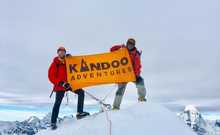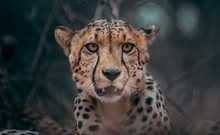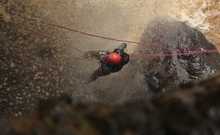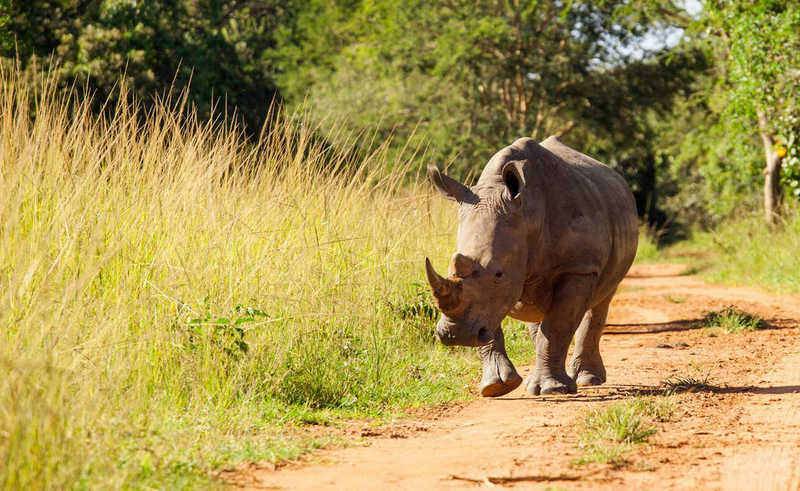Mount Stanley Climb & Safari
- Kandoo Summits
- Kandoo Safaris
- Kandoo Multi-activity

Contact
our UK team



All trekkers need to organise their own flights to Entebbe International Airport (EBB). At EBB, you will be met by a member of our team and transferred to your hotel. Early the next morning you will meet your local Kandoo representative and have a full pre-trip briefing.
After breakfast this morning we meet the rest of the group and have a pre-trip briefing at our hotel. We then hop into our private 4x4 vehicle and make the long drive to Kibale Forest. As this is a 6 hour journey, we stop on route to visit several points of interest and stretch our legs, keeping our eyes peeled for the primates that inhabit these areas. Upon arrival in Kibale, we can have a wander around the local community, immersing ourselves in the eclectic traditions and culture of the local people.
Kibale Forest showcases spectacular jungle and is known worldwide for its incredible range of primates; from chimps and baboons to colobus monkeys and grey cheeked mangabey, the sights and sounds we can experience beneath the canopy are unrivalled.
This morning we head out into the lush canopy of the rainforest to track our inquisitive Chimpanzee neighbours. Depending on how long it takes us to track them down, we may have time to go on the Bigodi Swamp Walk, a delve into a wildlife corridor rich in diversity. Famed for its birdlife such as the Great-blue Turaco and Yellow-billed Barbet, the Bigodi Swamps are also home to Sitatungas, Bushbucks, wild pigs and otters. We then return to our lodge and spend the evening relaxing and reflecting on our wildlife encounters.
This morning, after breakfast, we make the transfer to Kasese, which will be our base hotel before we embark on our challenging trek into the mystical mountains of the moon. On our way to Kasese we stop to explore the beautiful crater lakes scattered through the valleys before settling into our hotel. This evening we meet our trekking guide and have a pre-trek briefing. We then have a free dinner, so head into Kasese and sample some of the local cuisine or have a chilled night in and order at the hotel restaurant.
This morning we transfer to Kilembe where our trek begins. We start by walking up the valley floor through the towering trees of the Afro Montane forest. This is a steady climb as we are serenaded by choruses of birds with colobus and blue monkeys scampering through the forest canopy above. Upon reaching Sine Hut, we can take a short walk to Enock falls; set in livid, green vegetation and hanging vine. Then relax and enjoy the beauty of the forest.
If the group are all feeling good, we may proceed to Kalalama Camp at 3,134 metres which gives us more time at Mutinda Camp allowing us to climb up to Mutinda Lookout the following day should we wish to.
We wake at around 7:30am this morning for some breakfast, before beginning trekking at 8.30am. We immediately enter the Bamboo-Mimulopsis Zone which involves a steep climb with lots of high steps. Close to the wet season the bamboo zone can be rather muddy and slippery making the going slow. However, the atmosphere in the forest is beautiful as we climb 1.8km before reaching Kalalama Camp. From here, we enter the Heather-Rapanea Zone in which the trail meanders up and over several small knolls along a ridge top then drops down the side of the valley before climbing again, crossing small streams and passing close to moss strewn waterfalls. We follow the side of a river, tumbling over cushioned, moss covered rocks, under the Giant Heather trees cloaked in old man beards (Usnea lichen). The trail twists and turns as we climb up the deep valley, the atmosphere shrouded in mist.
In the afternoon, if we have time, we can climb up to the top of the Mutinda Lookout where views across the Rwenzori Mountains and down to Kasese town are incredible.
The trail to Bugata Camp is boggy, particularly around the wet season, the going is slow, stepping from tussock to tussock to make the going easier. We cross the Mutinda valley, through tufted grass and everlasting flowers interspersed with Giant Lobelias, before climbing a steep section up to the Namusangi Valley (3,840 meters). Sheer waterfalls cascade over the steep rockfaces all around and behind us, we have fantastic views of Mutinda Peaks. The Namusangi Valley is wide, with many ups and downs as the trail climbs steadily to Bugata Camp at 4,100 metres.
Today we trek to Hunwick’s Camp via Bamwanjarra Pass. As we leave Bugata Camp, we pass up a ridge then drop back down before ascending to Bamwanjarra Pass at 4,450 meters. From the pass on a clear day, there are excellent views of the three main peaks. The trail passes down the valley and around the edge of some bogs and thick evergreen vegetation. Here is possibly the best place in all the Rwenzori to observe the Malachite Sunbird as it feeds on the many lobelia flowers. Further on, we pass through some steep sections before a steady climb up and over a ridge to Hunwick's Camp which is situated on the top of a deep valley and has good views of Mt Stanley, Mt Baker, Weismann’s Peak and McConnell’s Prong.
From Hunwick's, we pass down and across the valley floor to Lake Kitandara which forms a stunning vista of deep, dark water and beautiful vegetation. From here we climb up Scott Elliott's pass then up the ridge to Margherita Camp which is situated between some huge rocks and offers some shelter from the strong winds. This is the very spot where the Duke of Abruzzi camped when making his climb to Margherita Peak in 1906.
A very early start this morning as we wake up at 2am and catch an early breakfast before setting off to climb Mt Stanley. The early start is necessary as the mountain is prone to closing in with heavy clouds and snow fall between 1-4pm which can happen drastically quick within a period of 10 to 15 minutes. Due to this extreme change in weather, we have set a strict turnaround time, so if we have not reached the summit before 10am we must turn around and begin our descent for the safety of everyone. Margherita glacier is no mean feat and the ice in one section is becoming steeper with about 200 meters of more than 60% grade, posing a real challenge. Crevasses have also become more prominent so it is necessary to follow the guide's path as they weave between the weaker areas of glacier.
Depending on the progress of the group, the guide may make the decision to climb up to a good vantage point on the southern edge of Alexandra Peak rather than the summit. Here we can enjoy fantastic views over Congo and return safely. After ascending the peak, we then pass directly back down to Hunwick's Camp.
From Hunwick’s Camp we start the day by climbing up a ridge towards McConnell’s Prong where we have unbelievable views of all three peaks and Scott Elliott’s Pass before reaching Oliver’s Pass at 4,505 metres. The trail cuts below Weismann’s Peak to the confluence of the Nyamwamba River which flows down thought Kilembe and Kasese to Lake George in Queen Elisabeth National Park. After crossing the confluence, the trail meanders down the valley to Kiharo Camp at which is situated in a deep valley with high cliffs and dense vegetation. On the way down the valley, after each bog, we climb over ridges of stones and earth which seem out of place but are remnants from the slow moving glaciers which eventually stopped moving, melted and left a pile of rocks and debris in front of where the glacier once stood.
The trail down the Nyamwamba Valley is mostly downhill and absolutely stunning with beautiful views and moss covered rocks bejewelling the river. The cascading waterfalls, deep valleys and forests are possibly the best in the Rwenzori Mountains.
A few kilometers from Kiharo Camp the path turns off to the right to pass along the river. In the clear areas, you may catch a glimpse of a Duiker quietly feeding in small clearings. A few kilometres down the river it becomes very steep with multitudes of waterfalls so we move away and follow a narrow ridge to bypass steep sections. The forest along this section is magnificent and full of life with many birds, primates, duikers and hyrax. A great experience and ending to a fantastic trek.
Upon arrival back in Kilembe, we hop aboard our transfer vehicle and make our way to Queen Elizabeth National Park where we can get a shower and settle in to our safari lodge.
This morning we explore the Queen Elizabeth National Park in our comfortable, private 4x4 vehicles; expect to see lions, elephants, hippos, crocodiles, buffaloes and leopards. This afternoon, we then head out on the water, taking a boat trip on the Kazinga Channel; one of the highlights of Uganda and the area with the highest concentration of hippos.
We begin with a morning game drive before transferring to Lake Mburo National Park (2-3 hours drive). Lake Mburo is one of the 2 National Parks with zebras and the only National Park with impalas in Uganda. There are no elephants and lions, so walking safaris are possible here. We settle into our accommodation for the evening.
This morning we have a relaxed morning at the lodge and embark on a walking safari through the savannah. Taking to the pathways we keep our eyes peeled for zebras and impala as they go about their day to day life. We then transfer to Entebbe making a stopover at the Equator for photos. This evening we can get packed up ready for our departure flight tomorrow.
Transfer to the airport and flight home.
Due to the technical difficulty of this trip, for safety reasons, if your guide deems your technical level as unsuitable or if you are seen as a danger to yourself or to those around you, you will be asked to descend and will not be permitted to summit. If you are unsure on your suitability for this trip please speak to a member of our team prior to booking.
Climbing Margherita Peak is a very tough challenge. Some sections involve technical climbing and knowledge of ropes and how to use crampons, ascenders, belay devices and an ice axe is advisable with ice sections of 60% steepness. The hardest sections are more of a hard scramble than climb but increase in difficulty when it snows. Fixed lines and guided roped sections make the route safe, but it is very steep and will take lots of determination to get up to the summit. Once you do, however, the rewards and exhilaration are enormous!
If you have already been to a lower alpine trekking peak and want to be pushed that bit further, this is a great next challenge. On the other hand, if you love a challenge, but have no experience of winter climbing then we recommend booking onto a course to learn basic winter skills and self rescue or head up Mount Toubkal in Winter, Mera Peak or Gran Paradiso. All our guides are trained in ice climbing and rescue and can guide you up with little experience, however you must be prepared to learn on the way up, be able to fit your own crampons, be comfortable using ascenders, descenders and tying basic knots. We provide the following equipment necessary for the climb; ropes, harnesses, carabiners, helmets, ice axes, ice screws and ascenders, all you need to bring are a pair of B2/B3 boots and crampons.
In Entebbe, at the start and end of your trip, you can purchase meals at the hotel or head out in to the city to find a restaurant. You will find restaurants offering both Ugandan and western alternatives. Expect to sample local cuisine such as matoke, cassava, chicken and beef stews, fresh fish and millet bread. Beer is probably the most widely available alcoholic
drink across Uganda as well as the locally made fermented banana beer - Pombe.
On the trek we will boil mineral water for you to fill your bottles each morning and evening, however we suggest you bring a water purification system in case you need to refill your bottle from a natural spring during the day. We do not encourage the purchasing of single use
plastic bottles and there will be nowhere to purchase these during your time in the Rwenzori Mountains.
On the trek we will be staying in mountain huts. These are small, wooden cabins or A-frames housing between 4-16 people in dormitory-style beds. The huts on the Kilembe Trail are maintained and run by the Rwenzori Trekking Service (RTS). To use these facilities we have partnered with RTS for our trek. This ensures you get the benefit of the best maintained huts in the Rwenzori. RTS provide mattresses and in some huts, blankets too, but you still need to bring a warm, sleeping bag. Rooms usually have solar powered lighting but no electrical sockets and your meals will be served in an indoor dining hut with a stove. Toilet facilities are primitive and consist of sheltered long drop toilets - these aren't necessarily a pleasant experience, however toilet tents are not permitted on this trail.
There is a strict weight limit of 23kg per porter on our trips in the Rwenzori Mountains, however this must also include group equipment, so we ask that your main luggage bag is no heavier than 15kg. This limit includes your sleeping bag and climbing equipment and is more than sufficient for your needs in the mountains.
PLASTIC BAG BAN
Similar to many African countries, Uganda has introduced a ban on all single-use plastic bags. Please support this fight against plastic by using more sustainable alternatives in your luggage, such as packing cubes and dry bags. Passengers with plastic bags in their luggage may be asked to surrender them on arrival at the airport.
The zip-lock bags required to carry liquids and toiletries in cabin baggage on airplanes will still be permitted.
We will arrange transport from the airport to your hotel at
any time, including the late evening or early morning. The transfer takes
approximately 40 minutes. As flights into Entebbe tend to arrive around 10pm in
the evening, we would recommend planning in an additional rest day after such a
long flight to recover and prepare yourself and your kit for the trek, rather
than heading out straight away the next morning.
If you are changing airlines or re-checking your luggage
at an airport on route, please ensure you leave a minimum of 3
hours between flights. This will account for any delays on arrival,
travel time across airports (this can take longer than you think) and time
taken to re-check baggage.
Travelling Responsibly
Here at Kandoo, we like to support our guests to make their
travel more sustainable. As of 2025, we are offsetting the carbon on all of our
trips from your arrival in destination to drop off at the airport. As we don't
include flight travel in our trips these aren't included in our offsetting
calculations, so we are providing you with the calculator below for you to do
this yourselves.
For Margherita Peak you will need specialist climbing equipment. We provide the following equipment as part of your trip package. This equipment is regularly checked and updated to meet regulations.
UPPER BODY
LEGS
FEET
CLIMBING GEAR
OTHER ACCESSORIES
| From | To | Price | Availability | Book | Enquire |
|---|---|---|---|---|---|
| 28/06/2025 | 13/07/2025 | £3,849 $4,895 |
Sold out
|
Sold out | Enquire now |
| 26/07/2025 | 10/08/2025 | £3,849 $4,895 |
Available
|
Book now | Enquire now |
| 23/08/2025 | 07/09/2025 | £3,849 $4,895 |
Available
|
Book now | Enquire now |
| 23/12/2025 | 07/01/2026 | £3,849 $4,895 |
Available
|
Book now | Enquire now |
| 24/01/2026 | 08/02/2026 | £3,999 $5,099 |
Available
|
Book now | Enquire now |
| 27/06/2026 | 12/07/2026 | £3,999 $5,099 |
Available
|
Book now | Enquire now |
| 25/07/2026 | 09/08/2026 | £3,999 $5,099 |
Available
|
Book now | Enquire now |
| 22/08/2026 | 06/09/2026 | £3,999 $5,099 |
Available
|
Book now | Enquire now |
| 23/12/2026 | 07/01/2027 | £3,999 $5,099 |
Available
|
Book now | Enquire now |
Want to ask us a question or book a private trip? Don't hesitate to contact us!
Contact us